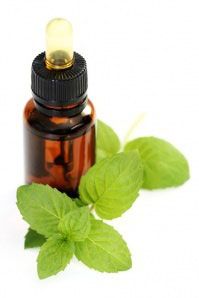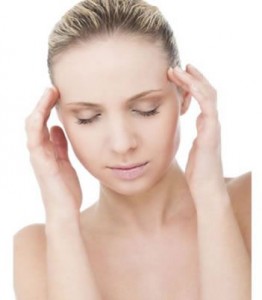Ginger And Lavender Against Headache
If you’re one of the lucky ones who do not know what it means to suffer from headache, then this is not the article for you. However, if you have those problems and you are not a proponent of conventional drugs, learn which plants our Mother Nature offers for relief of symptoms…
The two most common types of headaches include tension headaches caused by muscle tension and headaches caused by narrowing of the blood vessels that supply the brain with blood. Some of the most common causes of headaches are stress, bad posture, caffeine, eyestrain, low blood sugar, allergies, sinusitis and fatigue. However, there are serious problems that cause headaches, but they are still rare.

Traditional Chinese medicine recommends the use of ginger for headache. You can chew a small piece of fresh ginger or to prepare tea. Ayurveda recommends several known medications for headache. First soak a cloth in hot mustard oil and apply directly to the forehead so you could ease the pain. Another cure is coriander seeds. Place them in boiling water and breathe in the vapor. This is often used to alleviate the headaches associated with sinus.
If you want to get rid of the tension headaches with aromatherapy, choose lavender oil. You can rub it on your temples or to apply a drop or two of the root of the nose. You can also inhale peppermint oil or to relax with a relaxing bath of chamomile. The goal is to ease the pain with pleasant scents.
There are many other preparations of herbs for relieving of headache.Herbal teas from peppermint, chamomile, rose hip can relieve tension headaches. Another tested remedy is valerian root. You can take it as a dietary supplement in the form of tablets or drinking tea prepared from the root. However, be aware that this tea can keep you asleep.
We presented some of the herbal medicines that can ease the headache. They are in any case better choice than needlessly overdosing with tablets. Who would not love a relaxing bath or a cup of hot tea?
Migraine headaches, healing & self help

Migraine is the cause of 20% of headaches. This type of headache occurs when blood vessels in the head and neck constrict, which decreases blood flow.
Migraine usually is felt as a painful knock on the one side of the head with a feeling of nausea and sensitivity to light and sound.
Migraines occur more frequently in women than in men and usually are chronic. It is believed that the following factors are associated with the occurrence of migraines:
- Family history of migraines
- Longer muscle tension and stress
- Alcohol
- Smoking or passive inhalation of cigarette smoke
- Lack of sleep
- For women, the menstrual cycle and oral contraceptives
- Some foods such as chocolate, nuts and spices as well as products that contain the amino acid tyramine (cheese, red wine and smoked fish) and products containing preservatives or artificial sweeteners.
What are the symptoms of migraine headaches?
- Pulsating beats and usually on one side of the head
- Pain may be weak or strong and appears in the morning and gradually intensifies
- Pain may occur with other symptoms such as nausea, vomiting and dizziness
- Hypersensitivity to loud sounds and light
- It can last from several hours to two days
Most people with isolated tension headaches usually decrease pain with analgesics or with simple relaxation and good sleep. But if the pain is chronic, talk to your doctor about possible causes and solutions.
If you notice at least one of the following symptoms, immediately go to the doctor:
- Strong and sudden pain accompanied by nausea and vomiting
- Frequent headaches accompanied by memory problems, loss of concentration and fatigue
- Strong fever with stiffness in neck
- Fits (seizures)
- Difficulties in controlling the hands and feet
- Loss of feeling in hands and feet
- Fatigue and difficulty in communicating (apathy)
If your doctor examined you and found nothing serious, the following tips should help:
- Avoid excessive use of alcohol and cigarettes.
- Properly hold the body when sitting and working. It’s kind of chair you use. It should be a comfortable chair that holds your body in proper position.
- Regularly observe relaxation techniques.
- Get out in the fresh air and exercise.
- For some people a lot of help to reduce headache gives chamomile. It should be taken every day (even if you don’t have a headache).
Symptoms of migraine headaches can be reduced by:
- Resting in a quiet room with the lights off.
- Avoiding foods and beverages that contain ingredients that could cause you a headache.



